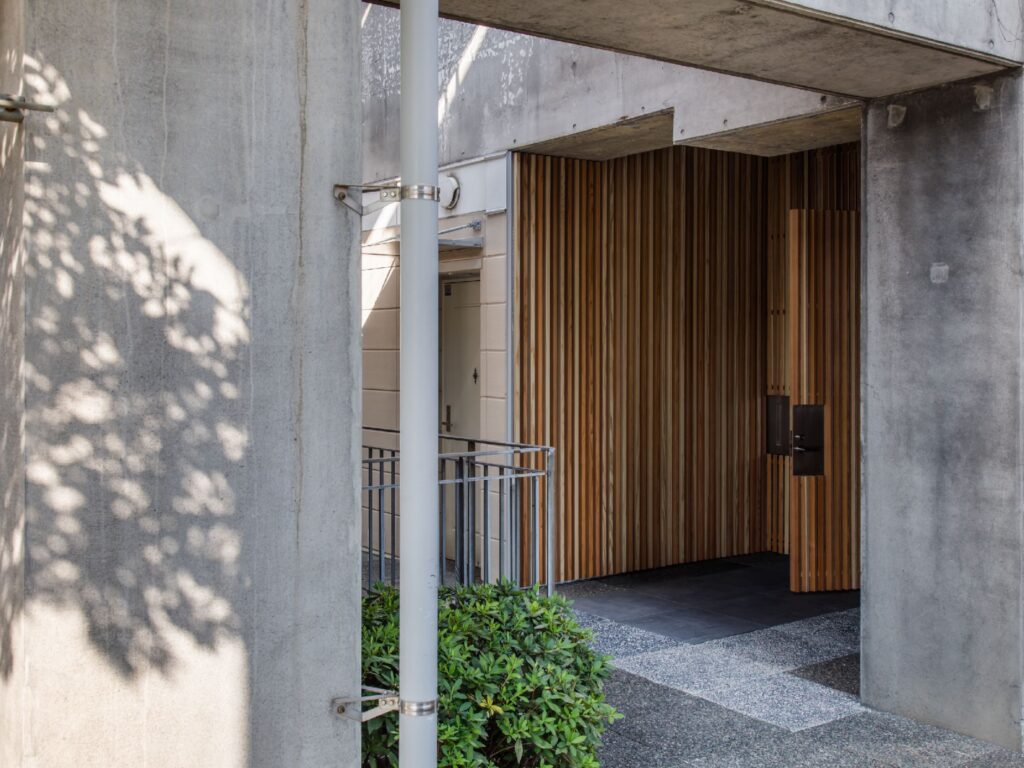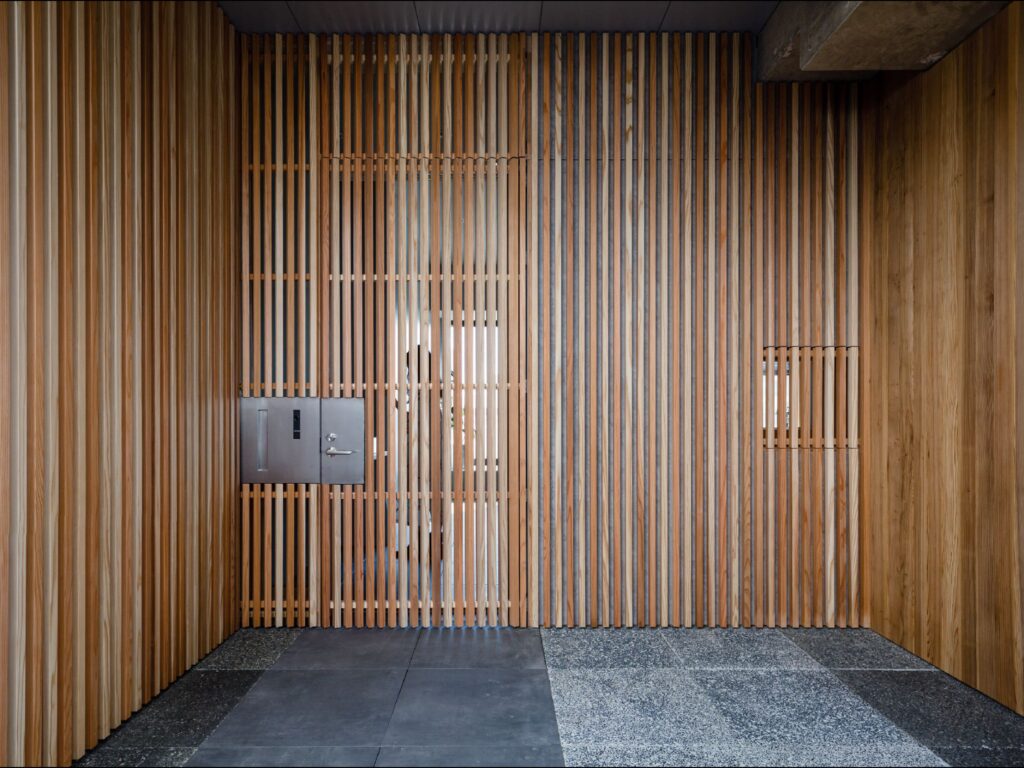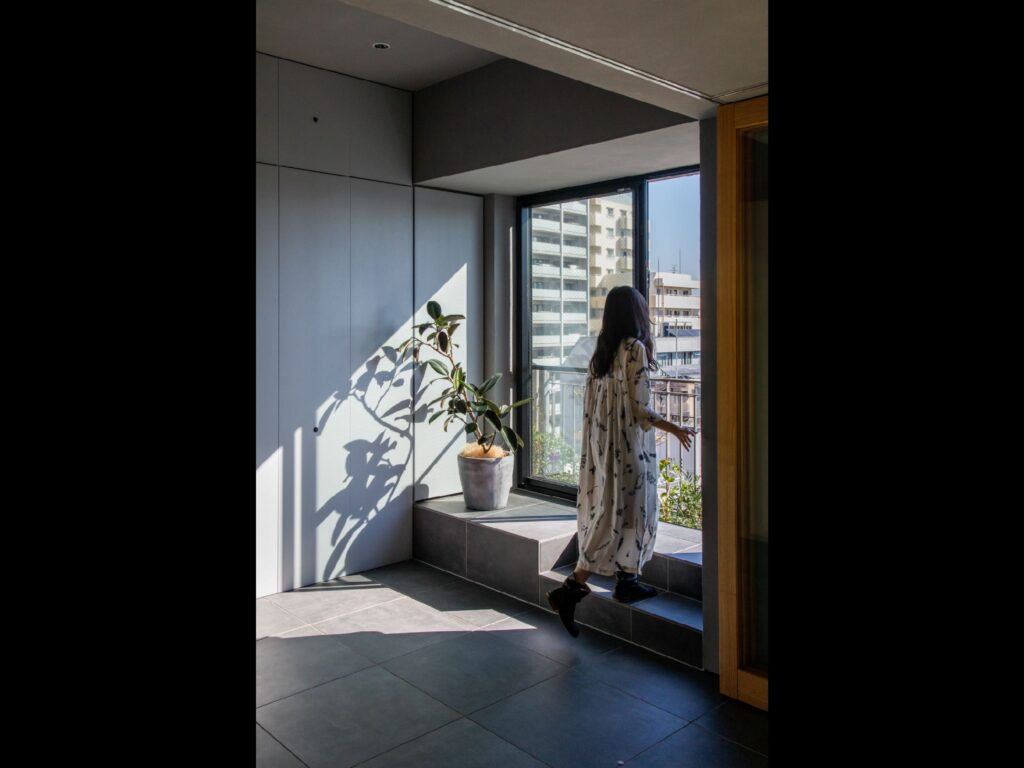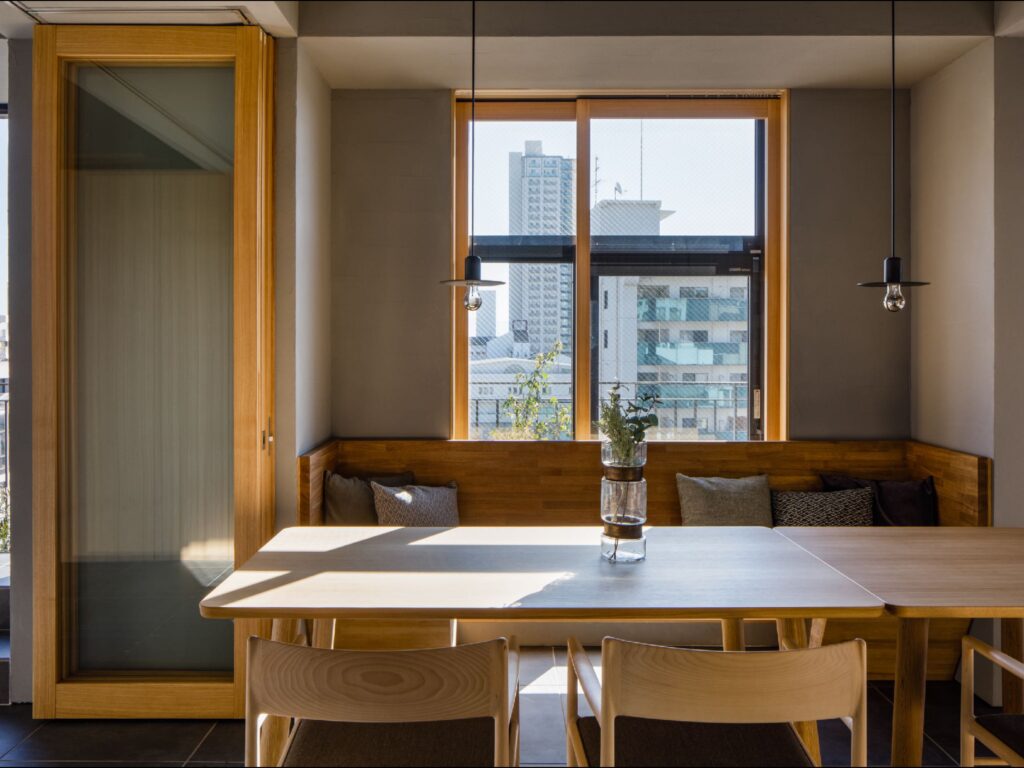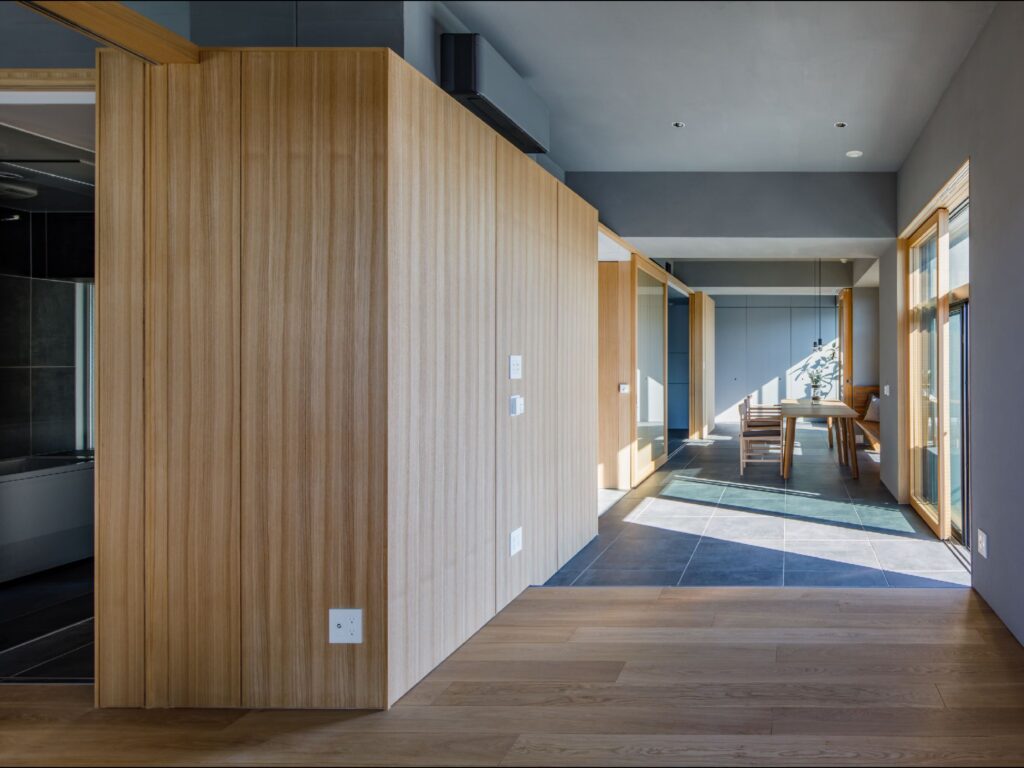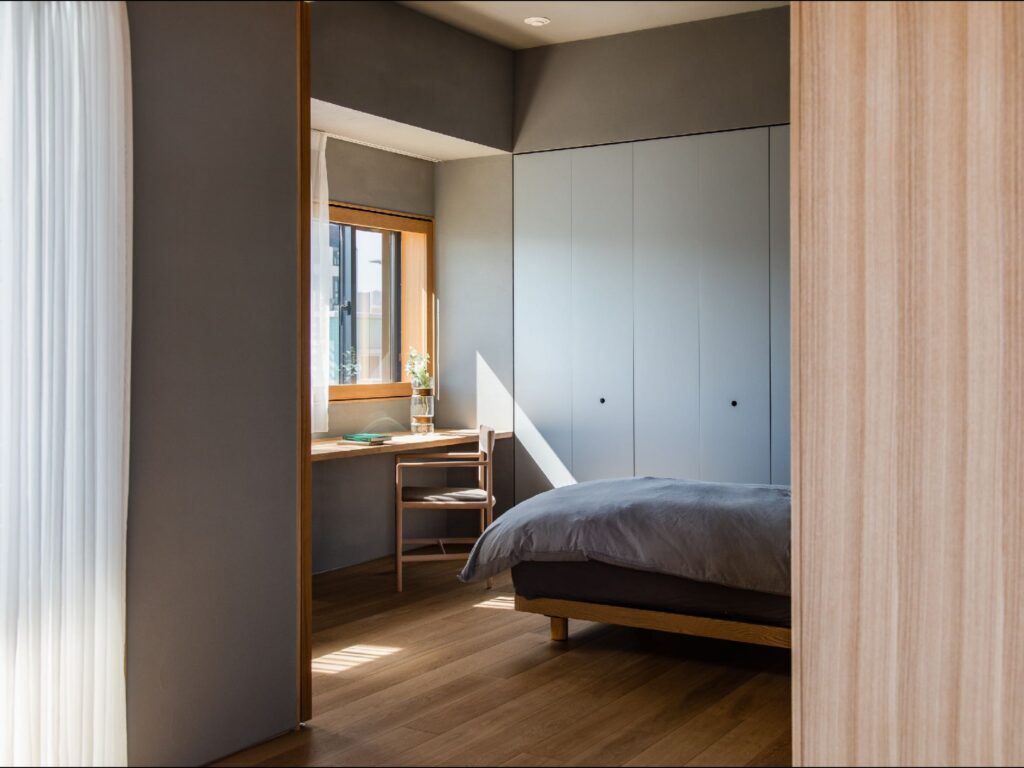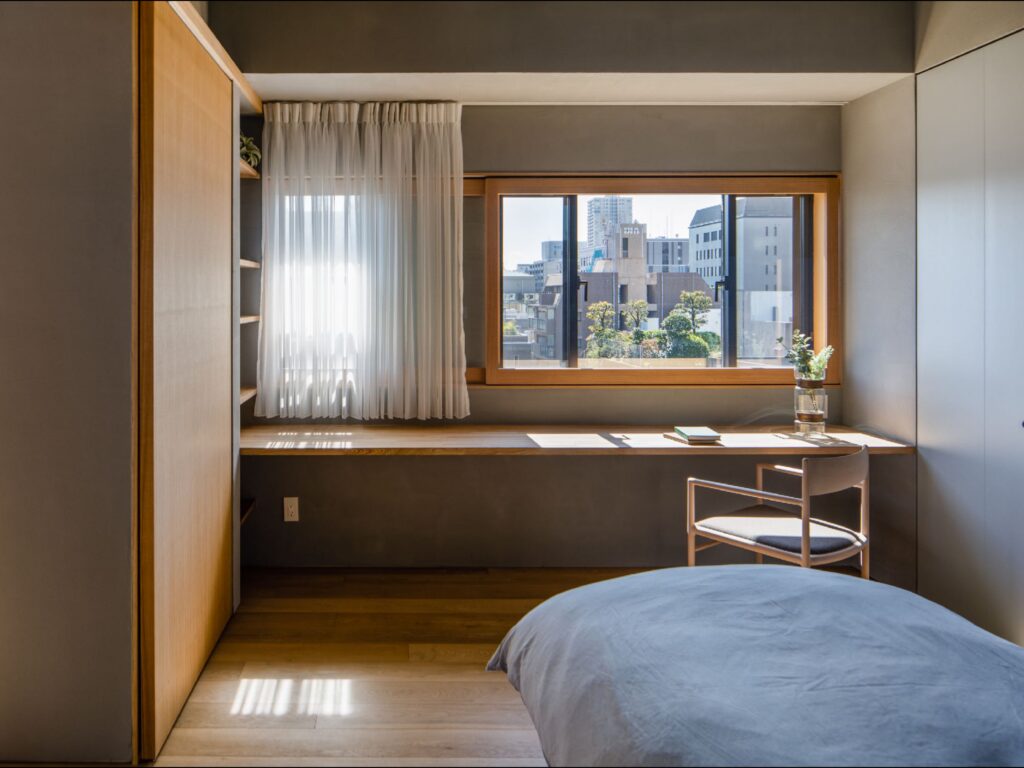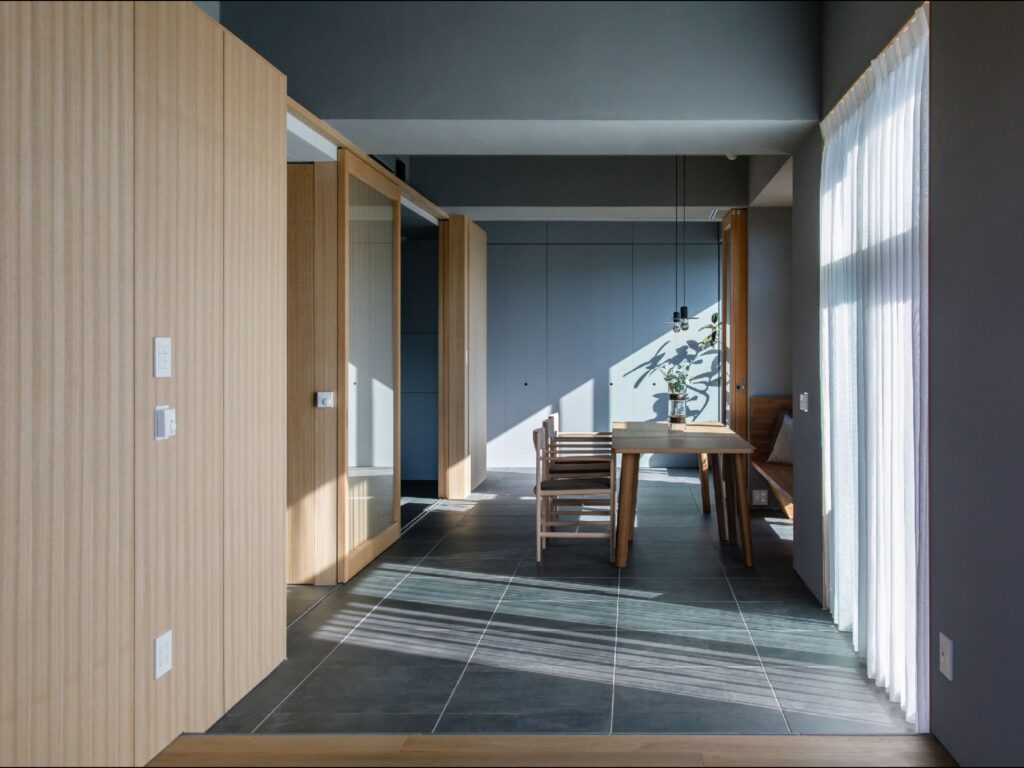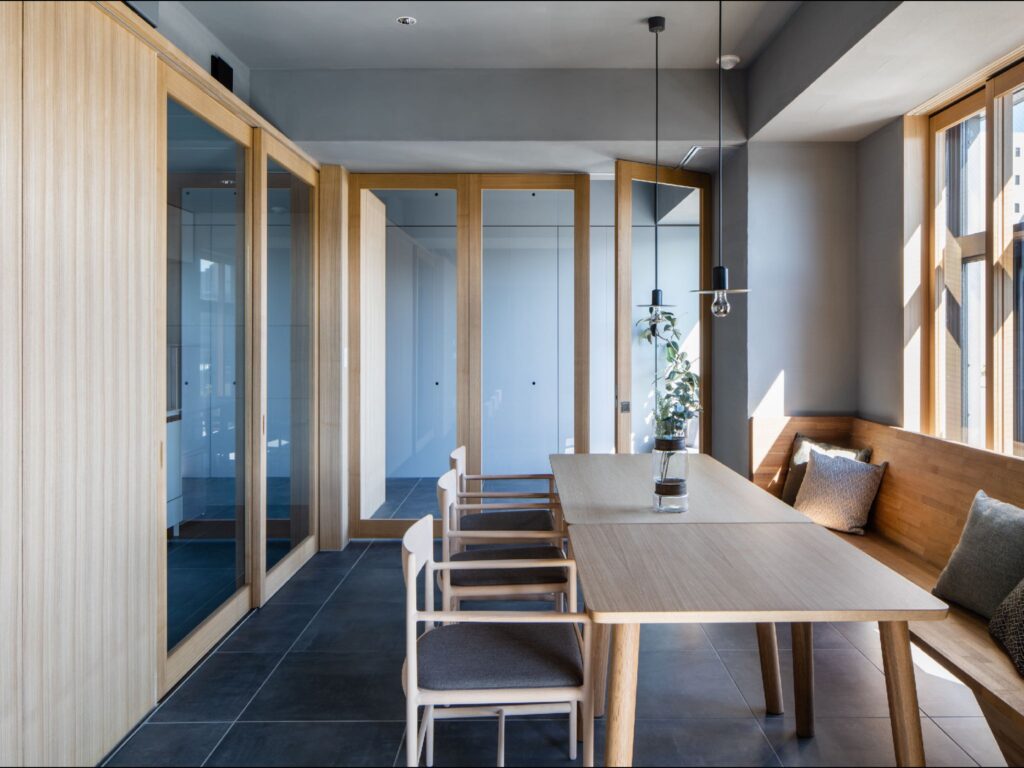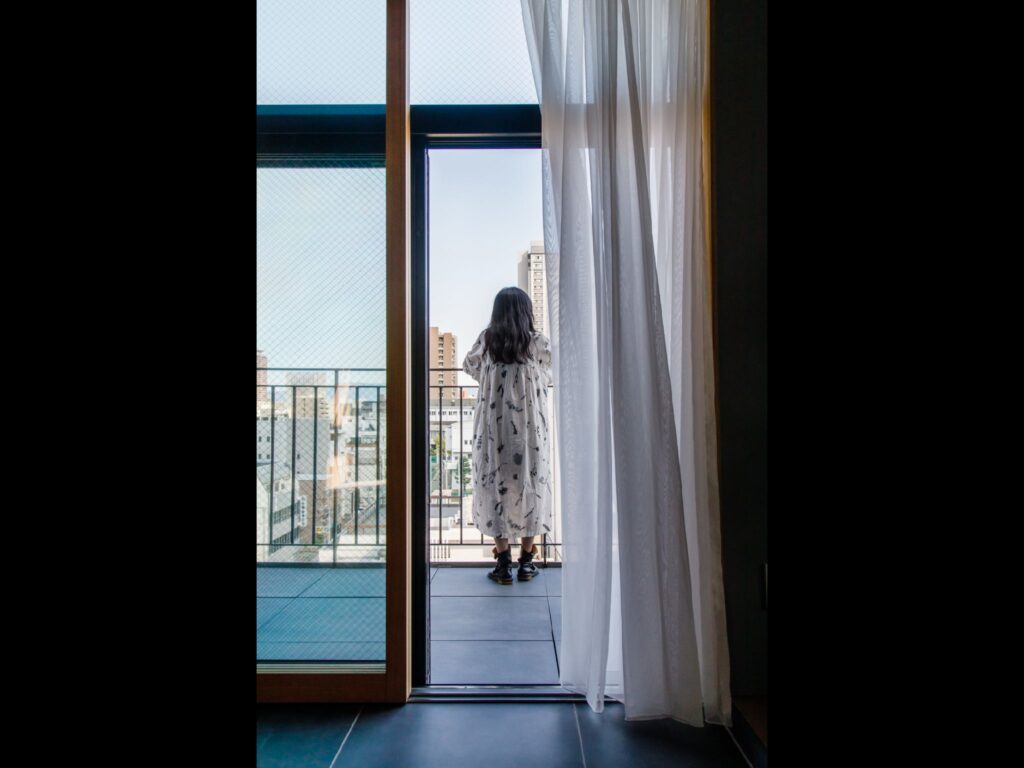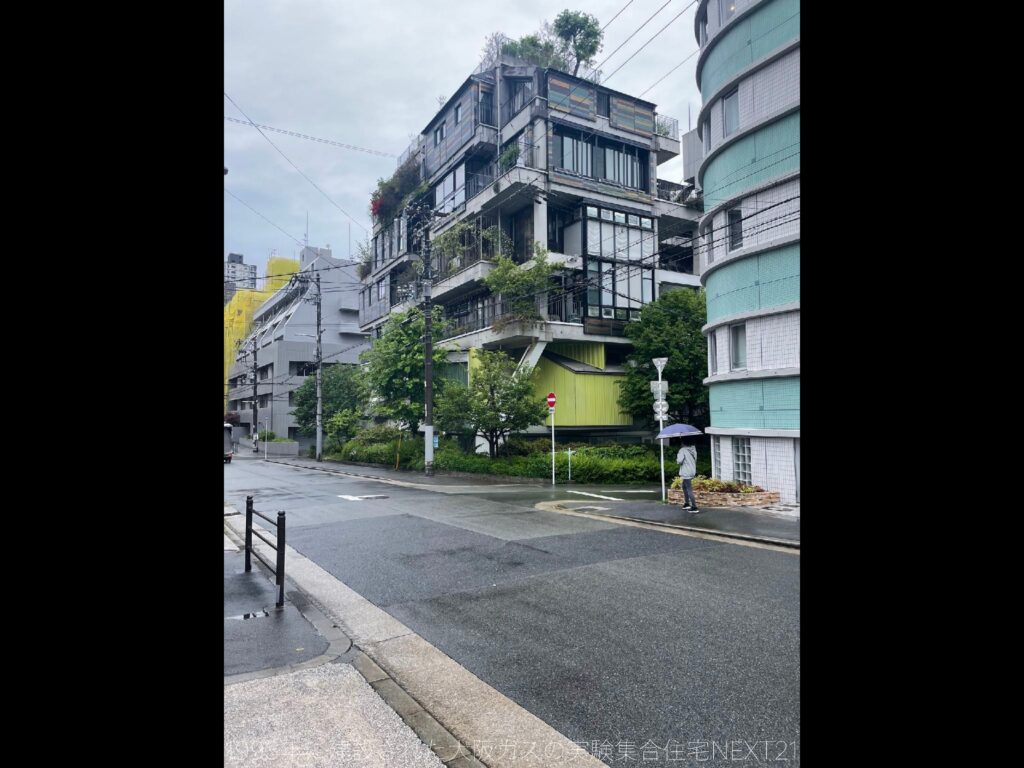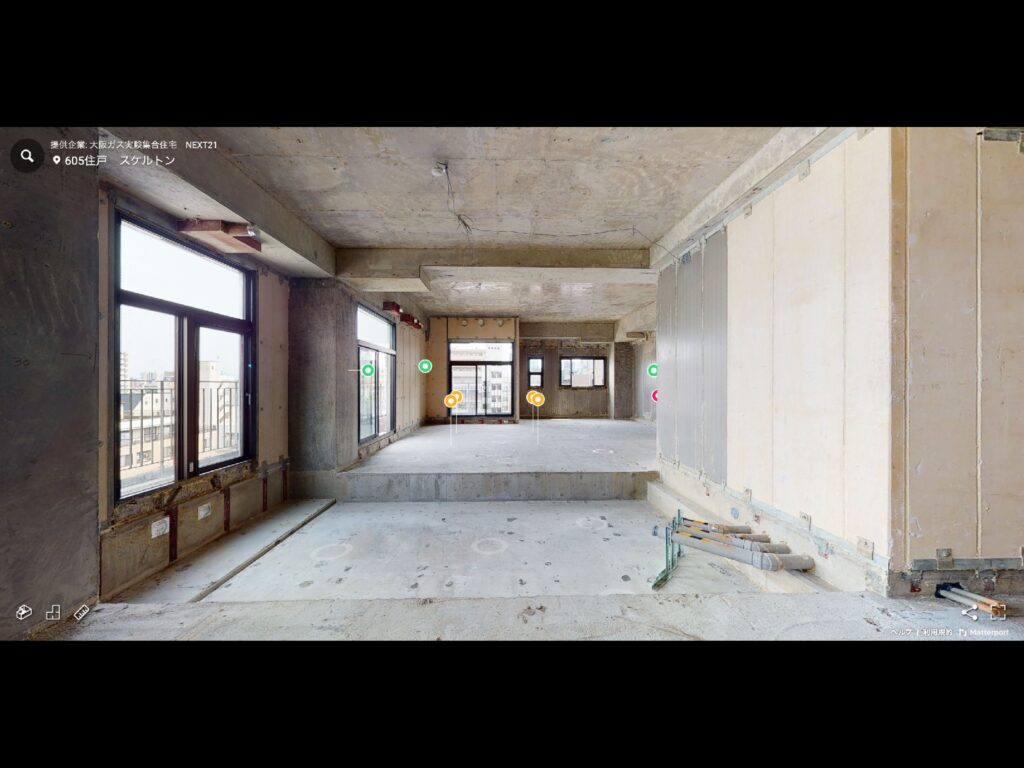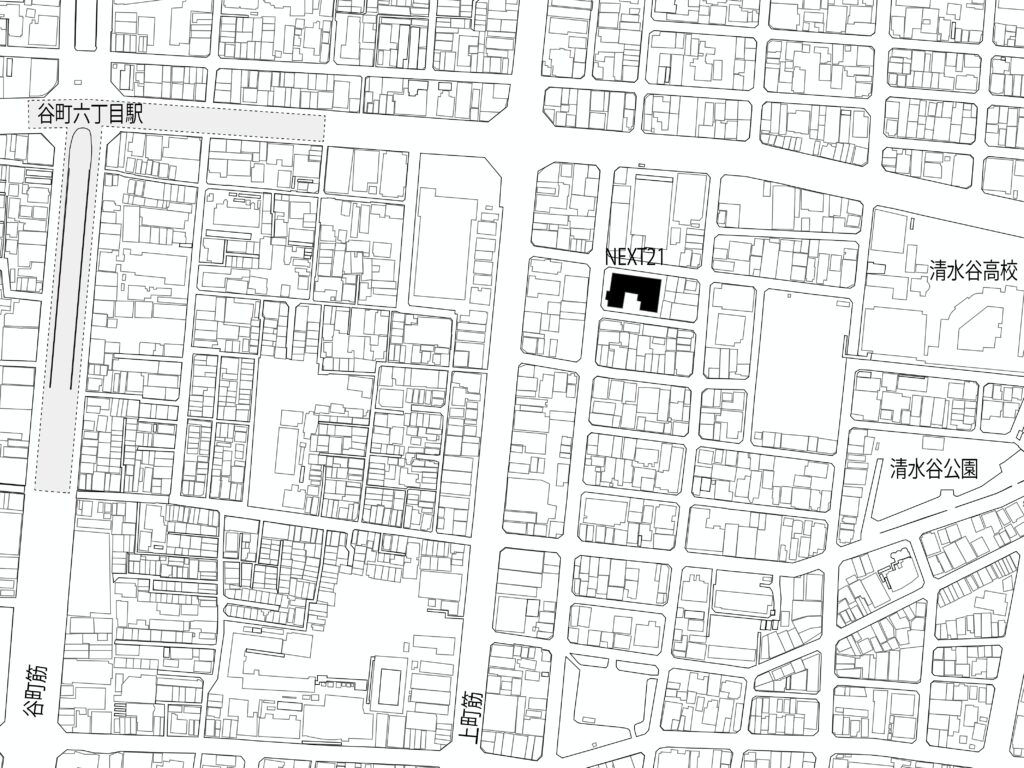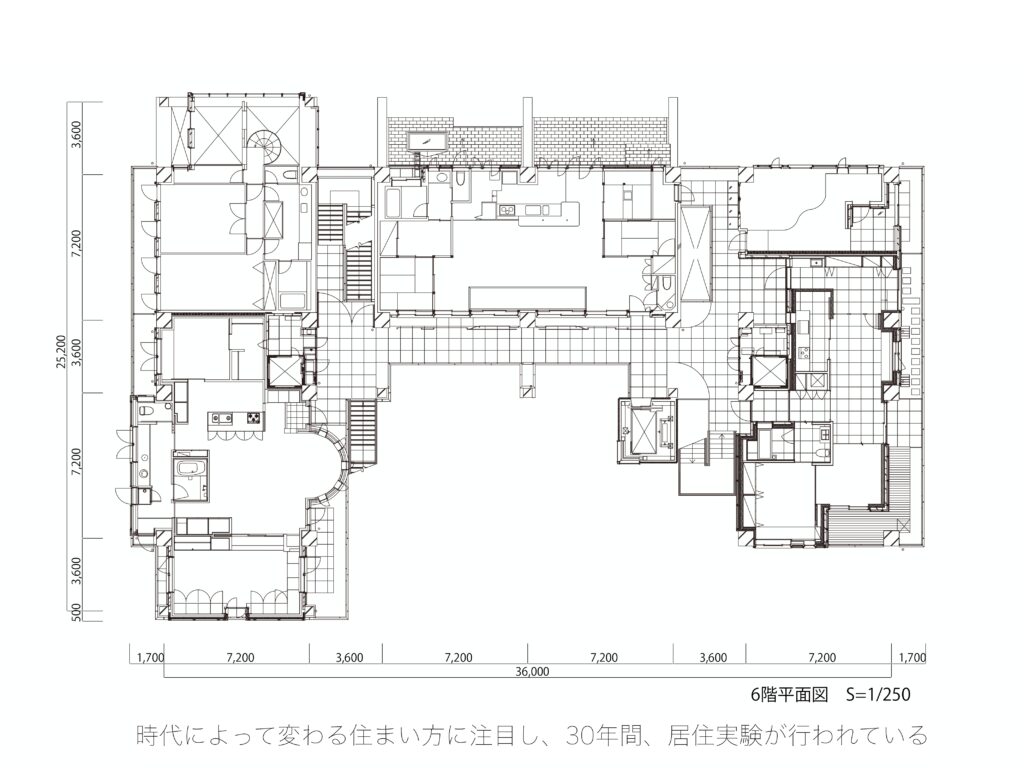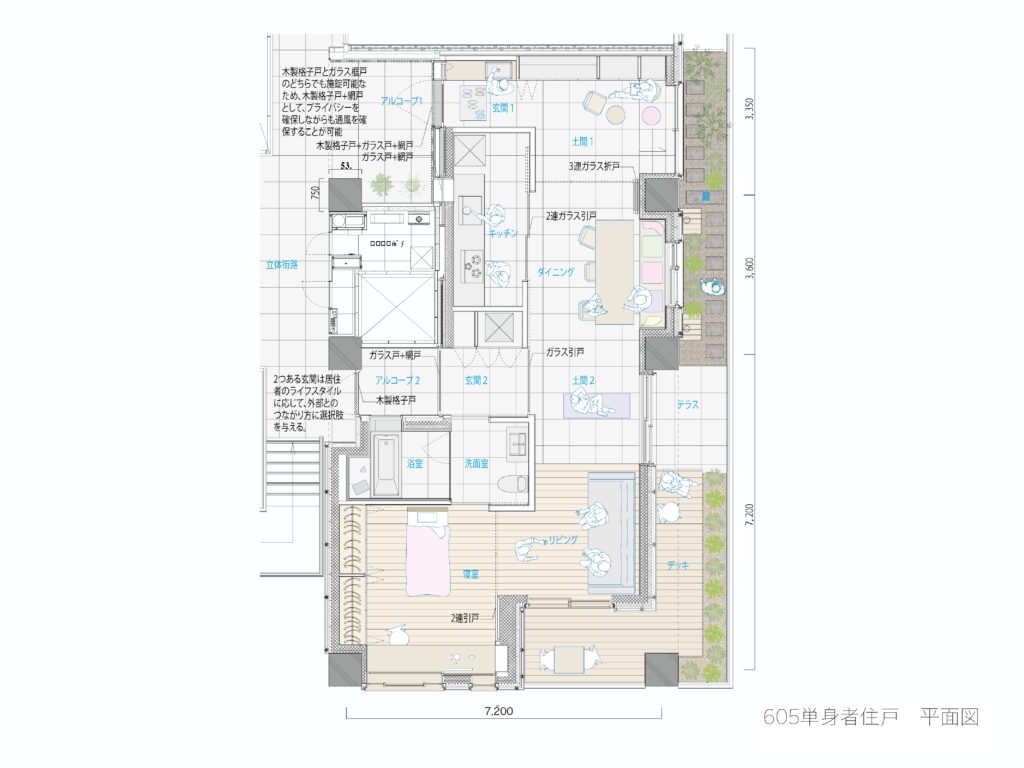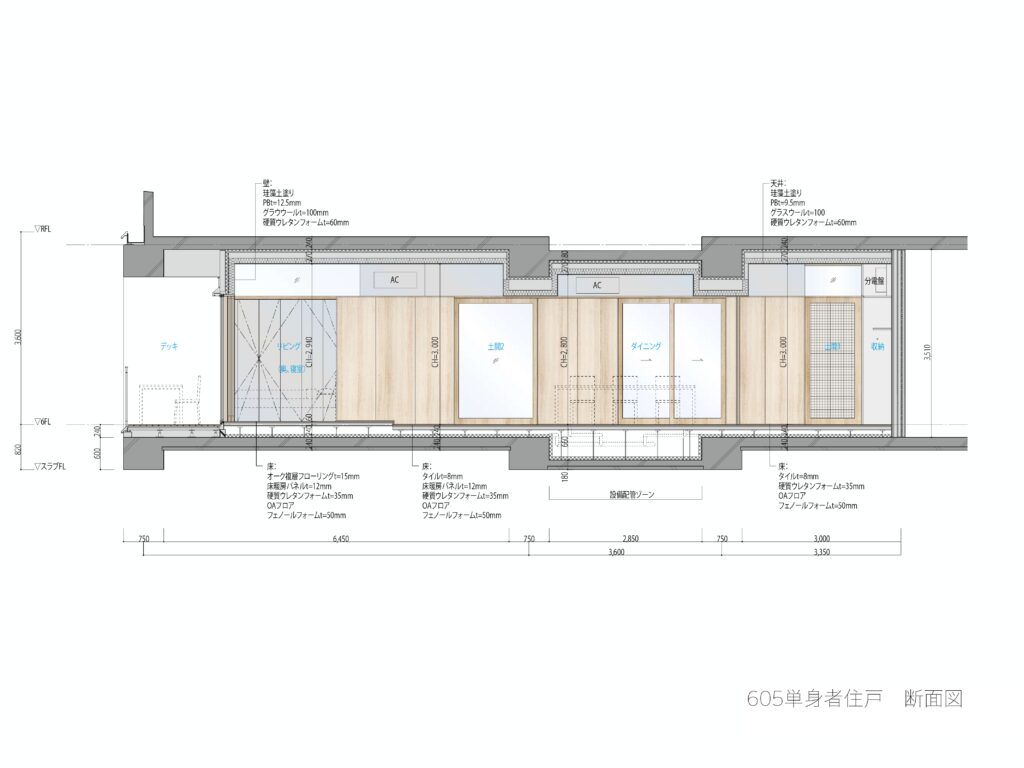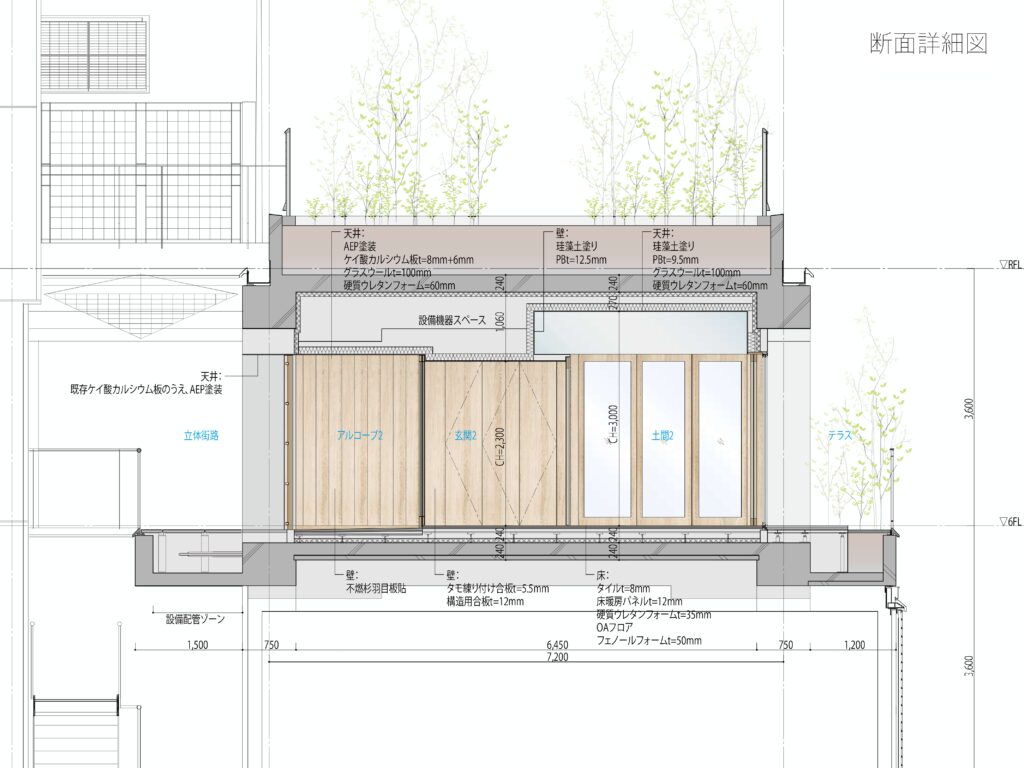© 2022 ALPHAVILLE. All Rights Reserved. | CONTACT
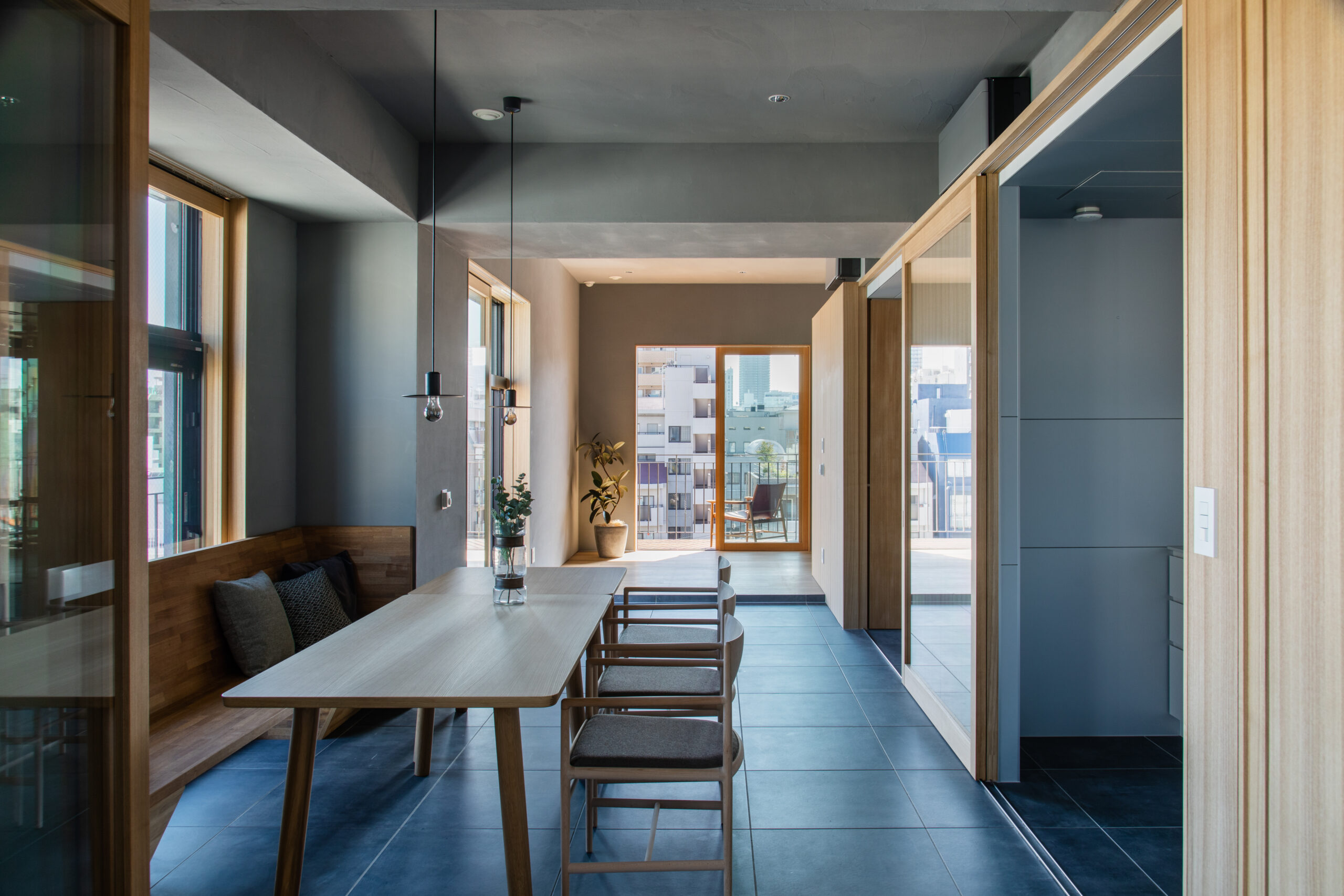
Linked House
NEXT21 605 renovation LINKED HOUSE
‘Osaka Gas Experimental Housing Complex – Unit 605 Refurbishment – LINKED HOUSE’
NEXT21 is an experimental housing complex built in 1993. For 30 years since its completion, Osaka Gas and a working group of researchers and designers have been discussing and planning the housing philosophy required by the times, and have continued to experiment with the realised dwelling units. For the 2022 refurbishment, the working group consists of Mitsuo Takada (professor at Kyoto University of Art and Design), Tsuyoshi Seike (professor at the University of Tokyo), Tomoyuki Chikamoto (professor at Ritsumeikan University), Shinichi Chikazumi (Shukosha Architectural & Urban Design Institute), Midori Kamo (professor at Otemon Gakuin University), Osamu Doi (lecturer at Osaka Public University) and members from Osaka Gas. The theme of the Continuous Renovation Study Working Group was the housing of single people with diverse lifestyles. I was commissioned to design under this theme, and the keyword I chose was ‘Link – Link’. I wanted to propose a home that is not an isolated living space, but a home where spaces are connected in various layers, like the links on a website.
The first characteristic that can be mentioned is the intermediate area as a place where the interior and exterior overlap. When thinking about housing complexes that are suited to the Japanese environment, shouldn’t more housing styles that regulate lighting and ventilation through intermediate areas be introduced? In particular, the common space of NEXT21 is richly planted with trees, and by creating an intermediate area within the house that connects to the balcony of the dwelling unit, we wanted to secure the connection with nature that is often lost in high-rise dwellings. The second feature is the two entrances that bring the multilayered charm of the communal passageways, known as multi-storey streets, into the interior. Because this is a one-person residence, there is the possibility of welcoming not only private strangers, such as friends and relatives, but also public strangers, such as business and domestic services. Therefore, in addition to the existing entrance, another entrance is opened on a multi-storey street, and an alcove is provided as a buffer zone, so that various flow lines can be selected according to lifestyle. The final feature of the house is the plan that connects the entrance, dining and living room to the bedrooms, as if surrounding the facility core. By opening and closing the sliding doors and two movable partitions between the core and the living space, the living space can be expanded and contracted, allowing the residents to choose how they want to live, whether they want to invite more friends, have space for work or hobbies, or welcome housemates, as well as accommodating possible future changes. Cross-sectionally, ventilation equipment is grouped above the equipment core, and the ceiling height is secured in the living room section by representing the skeleton frame, paying attention to the sense of continuity with the multi-storey street and balconies. By overlaying various spatial connections in this way, the building is expected to generously accommodate the already diverse ways of living of single people, and at the same time to serve as a base for creating new ‘connections’.
NEXT21 Renovation 2022 Room 605
Housing complex
Osaka City
Site area: 1,542.92 sqm
Building area: 896.20 sqm
Total floor area: 4,577.20 sqm
605 rooms Total floor space: 82.98 sqm
1 basement floor + 6 above ground floors
RC construction (1-2 floors), precast concrete + RC construction (3-6 floors)
Room 605 Completion: 2022
Photo credit: Ohtake Ohsuke
